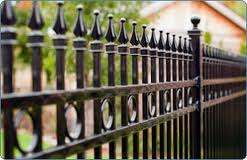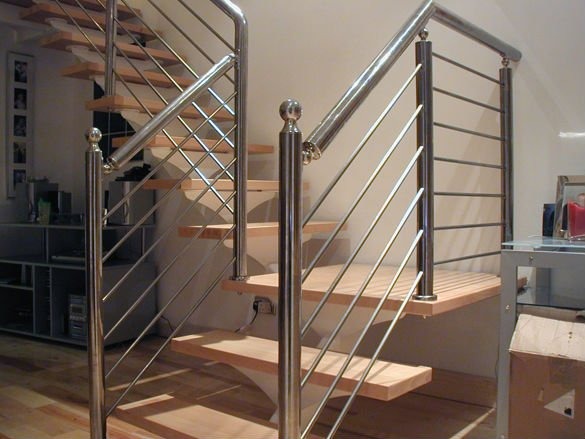Metal Railings – history and facts
Glass Balustrades | Juliet Balconies | Galleries | Articles | Case Studies
To the uninitiated, metal is metal but there are many different types of metals, all of which can add their own style and feel to a finished product. Metal is a common part of the home and surrounding areas and over the centuries, one of the most common features of a home or building has been the railings surrounding it. Metal railings have a combined role in the surroundings of a home, providing an added level of security in addition to looking good. There have been many different types of metal used for metal railings throughout the years and the following are some of the most popular.
Wrought Iron Metal Railings

The term wrought iron is still used for metal railings today but it does not refer to the same type of metal as was used in previous centuries. This is not a misnomer because the term wrought iron literally means that the metal has been manipulated or worked into shape but it should be noted that wrought iron metal railings used today are not constructed from the same metal as previous wrought iron metal railing.
Wrought iron is the standard "iron" for Europe and has been around since the Middle Ages, although the methods of making, designing and shaping the iron changed dramatically over the centuries. The Industrial Revolution of the second half of the 18th century brought many new ways of making wrought iron and many of these methods showcased innovative ways of removing any impurities caused by the fuel coming into contact with the metal.
The last wrought iron plant in the United Kingdom, and the world, closed down in 1973 bringing an end to this style of metal. Historical buildings are able to be preserved in a true fashion through the use of recycled wrought iron but all new wrought iron metal railings are actually made from mild steel.
Mild Steel Metal Railings
Mild steel has become the most popular form of metal to make metal railings from and this is due to a number of reasons. Most importantly for manufacturers, it is a cheap metal, especially when bought in bulk supply. This vast reduction in cost has been of benefit to many suppliers and iron railing manufacturers, helping to combat rising costs in other areas.
Mild steel metal is also very malleable without being brittle, making it an ideal replacement for wrought iron metal railings. When wrought iron metal began being phased out, this method of metal production was growing in popularity and superseded it with regards to metal railing production. Even to this day, mild metal is the most common form of steel.
Stainless Steel Metal Railings
Although many different people were close to inventing a stainless steel, the history books record that Harry Brearley invented stainless steel in August 1913. The immediate benefit in this breakthrough was in making cutlery but it wasn't too long that the emergence of steel that would be less likely to rust captured the imagination in a number of ways.
Stainless steel had a role to play in the war effort with many of the engine valves for fighter jets being made from stainless steel but it was in the 1920s that it first started being used for buildings and common exterior work.
St Paul's Cathedral in London and the Chrysler Building in New York are just two of the famous locations that were strengthened and bolstered by stainless steel on their exterior. Nowadays, polished stainless steel railings and barriers play a supporting role in many houses framing balustrades and stairways.
There have been many other types of metal used in the creation of iron railings with brass and chrome providing a unique finish and style to a railing. Due to the cost factor, it appears that mild steel metal will remain the most popular form of steel for railings but there are other reasons why this stands out for mass use.
Its malleability helps to create a wider range of designs, ensuring that customers can get the style they want with a guarantee of the railings lasting for a long time. Fashion taste and budgets will always influence the overall decision of metal railings but there are plenty of options for every consumer.








